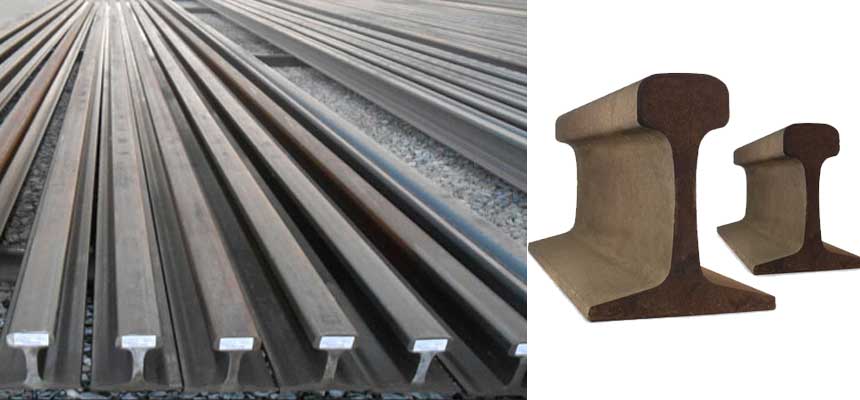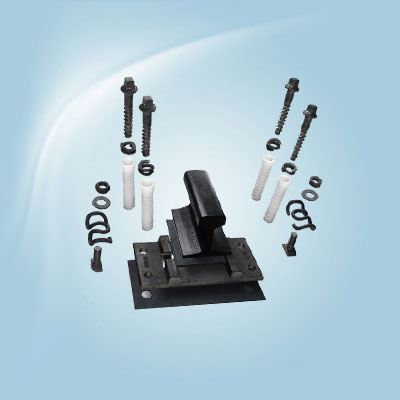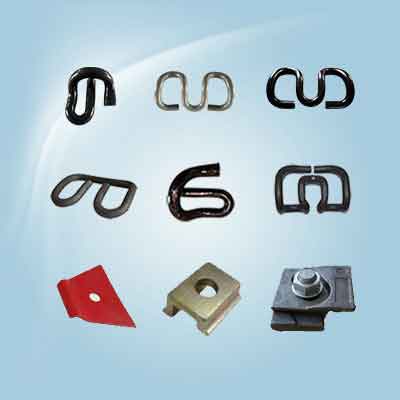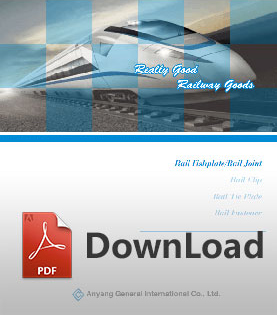Steel rail type overview

Steel rails are known to be an integral part of railway tracks. Steel rail and other railway fasteners support the railway track system, including railway sleepers, rail joints, railroad spike, rail clips, track bolt and nut, etc. The steel rails are always in an inconspicuous place for the train to crush and guide the train. The modern steel rail is made of steel. Rails were not like this at the beginning of their birth, or even the current material. At first it was a piece of square wood, and later the wood was covered with iron wrap. As the speed and weight of the train increase, the material of rails becomes steel step by step. In modern times, with the increase of train speed and axle weight, the improvement of the requirements for stability, the improvement of production and manufacturing processes, the classification of rails is becoming more and more detailed.
Steel rail types
There are many ways for steel rail classification, such as weight, application, international standard, and etc.
Classified by weight
The type of steel rail is usually divided by weight. For example, we often say a 50kg rail, which means rails with a weight of 50kg/m, and so on. There are 38kg rails, 43kg rails, 50kg rails, 60kg rails, 75kg rails, etc. There are also 24kg rails and 18kg rails, of which rails of 43 rails and above are generally called heavy rails, otherwise, the steel rails weight below 43kg are called light rail. There is a special kind of steel rail that is called crane rail. Crane rail is used for crane railway.
Classified by international standard
For meeting various sizes of different countries around the world, steel rail can be process according to international standard, such as GB, AREMA, BS, UIC, JIS, DIN, AECE, and etc.
Classified by manufacturing process
According to the manufacturing process, the steel rail is mainly divided into hot-rolled rails and heat-treated rails. In fact, all of the rails are produced by the hot rolling process. The heat-treated rails are reheated after the hot-rolling process, which are divided into online heat treatment and offline heat treatment. The online heat treatment is already mainstream, which is more energy-saving and more efficient.
Classified by intensityThe steel rail is a complex alloy, in addition to the main component iron (Fe), there are five major elements, carbon (C), manganese (Mn), silicon (Si), phosphorus (P), sulfur (S), of course, there will be some decisive role of the trace elements vanadium (V), chromium (Cr), and some rare earth elements, etc., these elements merge with each other, due to different manufacturing processes, resulting in different physical properties of the steel rail.
Classified by rail usage
High-speed railway: The steel rails in the station (that is, the parking lot) use 60 rails (partial parking lines use 50 rails), and the main line (including station lines and auxiliary lines) is also 60 rails, but the steel rails of high-speed railways have higher requirements on flatness, and various sections. The size requirements are higher.
Ordinary railway: It is the passenger and freight railway before the completion of the high-speed railway (now still operating), the depot and parking lot use 50 steel rails, and the main line use 60 steel rails.
Heavy load railway: Similar to the Daqin, Yuhuang Railway and Shenhua Coal Transportation Line, it is characterized by a large train axle and a large total weight. The load of a train can reach more than 10,000 tons (for comparison, the average subway is about 100 tons). This type of railway generally uses a specially manufactured 75-rail, which can greatly increase the service life.
High-cold railway: Specifically, the Qinghai-Tibet line, which passes through the permafrost zone, has high requirements for cold resistance and corrosion resistance of the steel rails, and uses a specially manufactured 60 rail.
Subway: The domestic subway is now basically 50 rails for the parking lot and 60 rails for the main line. Of course, the long-term subway main line uses 50 rails.
Tram: Because of the small size of the wheel, the small turning radius, and the small number of the turnout, the tram is easy to derail, so the grooved rail with its own guard rail is selected.
- Rail Fasteners
- rail fastening system
- rail clip
- railroad spike
- Track bolt
- rail shoulders
- rail anchor
- rail clamp
- tie plate
- Rail Pad
- rail insulator
- rail plastic dowel
- other rail fasteners
- Railway Switch
- SKL series rail fastening system
- Chinese standard rail fastening system
- screw spikes
- Crane rail fastening system
- K type rail clip for Africa
- Hey-Back Rail Fastening
- rail fasteners for Mexican market
- Ss25 screw spike
- Ss35 rail sleeper screw spike
- Ss8 screw spike
- coach screw
- Crane Rail Clip
- Rail Joints (Fishplate)
- Steel Rail
- Railway Sleeper
 rail clip
rail clip
 rail joints
rail joints

 Español
Español English
English
